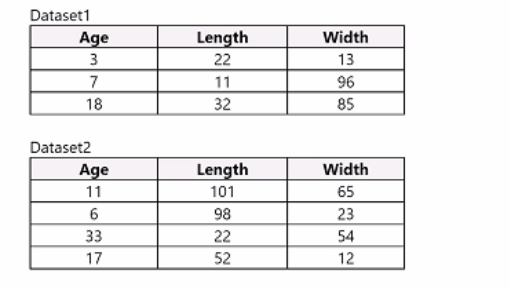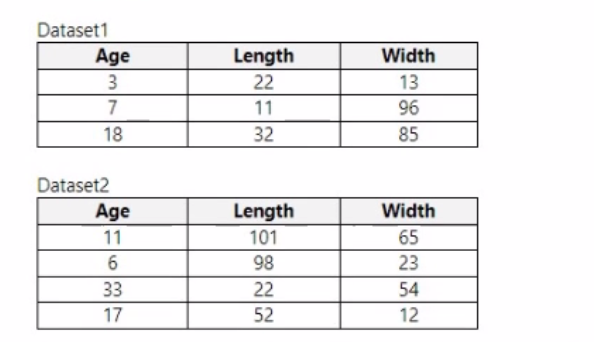Ace Microsoft's DP-100: Your Gateway to Azure Data Science Mastery
Ready to elevate your career in the booming field of data science? Our comprehensive Microsoft Designing and Implementing a Data Science Solution on Azure DP-100 practice questions are your secret weapon. Crafted by industry experts, these materials go beyond mere memorization, immersing you in real-world scenarios that mirror the exam's complexity. Whether you prefer the portability of PDFs, the interactivity of web-based tools, or the robust features of desktop software, we've got you covered. Don't let imposter syndrome hold you back – join thousands of successful candidates who've leveraged our resources to land coveted roles in AI, machine learning, and big data analytics. With Azure's growing dominance in cloud computing, your DP-100 certification is a golden ticket to exciting opportunities. Time is ticking, and spots for the next exam date are filling fast. Invest in your future today and transform from Azure novice to data science virtuoso!
You manage an Azure Machine Learning workspace.
You need to define an environment from a Docker image by using the Azure Machine Learning Python SDK v2.
Which parameter should you use?
Correct : B
Start a Discussions
You run Azure Machine Learning training experiments. The training scripts directory contains 100 files that includes a file named. amlignore. The directory also contains subdirectories named. /outputs and./logs.
There are 20 files in the training scripts directory that must be excluded from the snapshot to the compute targets. You create a file named. gift ignore in the root of the directory. You add the names of the 20 files to the. gift ignore file. These 20 files continue to be copied to the compute targets.
You need to exclude the 20 files. What should you do?
Correct : C
Start a Discussions
Note: This question is part of a series of questions that present the same scenario. Each question in the series contains a unique solution that might meet the stated goals. Some question sets might have more than one correct solution, while others might not have a correct solution.
After you answer a question in this section, you will NOT be able to return to it as a result, these questions will not appear in the review screen.
You train and register an Azure Machine Learning model.
You plan to deploy the model to an online end point.
You need to ensure that applications will be able to use the authentication method with a non-expiring artifact to access the model.
Solution:
Create a Kubernetes online endpoint and set the value of its auth-mode parameter to amyl Token. Deploy the model to the online endpoint.
Does the solution meet the goal?
Correct : B
Start a Discussions
Note: This question is part of a series of questions that present the same scenario. Each question in the series contains a unique solution that might meet the stated goals. Some question sets might have more than one correct solution, while others might not have a correct solution.
After you answer a question in this section, you will NOT be able to return to it. As a result, these questions will not appear in the review screen.
You use Azure Machine Learning designer to load the following datasets into an experiment:

You need to create a dataset that has the same columns and header row as the input datasets and contains all rows from both input datasets.
Solution: Use the Execute Python Script module.
Does the solution meet the goal?
Correct : B
Start a Discussions
Note: This question is part of a series of questions that present the same scenario. Each question in the series contains a unique solution that might meet the stated goals. Some question sets might have more than one correct solution, while others might not have a correct solution.
After you answer a question in this section, you will NOT be able to return to it as a result, these questions will not appear in the review screen.
You use Azure Machine Learning designer to load the following datasets into an experiment:

You need to create a dataset that has the same columns and header row as the input datasets and contains all rows from both input datasets.
Solution: Use the Apply Transformation module.
Does the solution meet the goal?
Correct : B
Start a Discussions
Total 461 questions